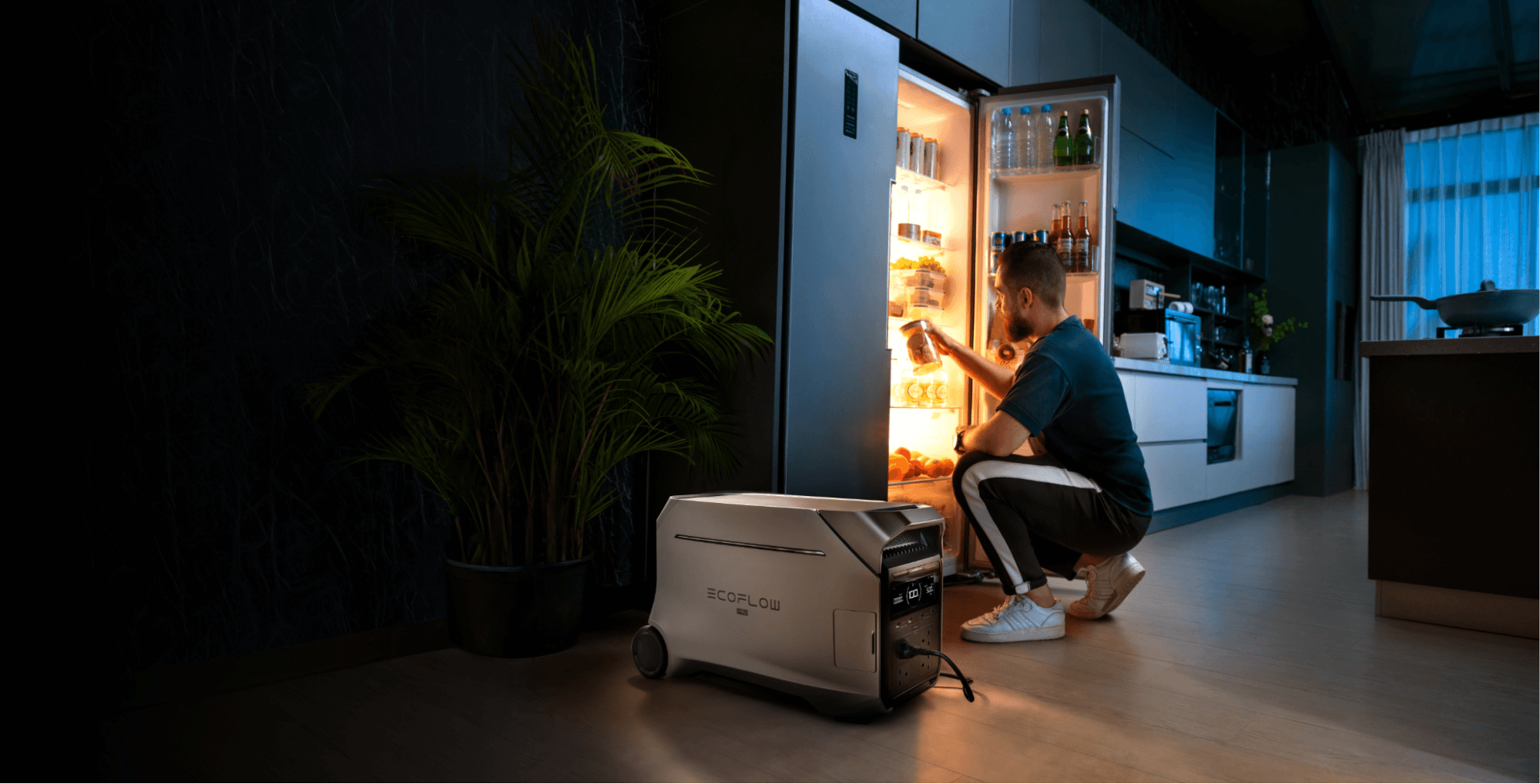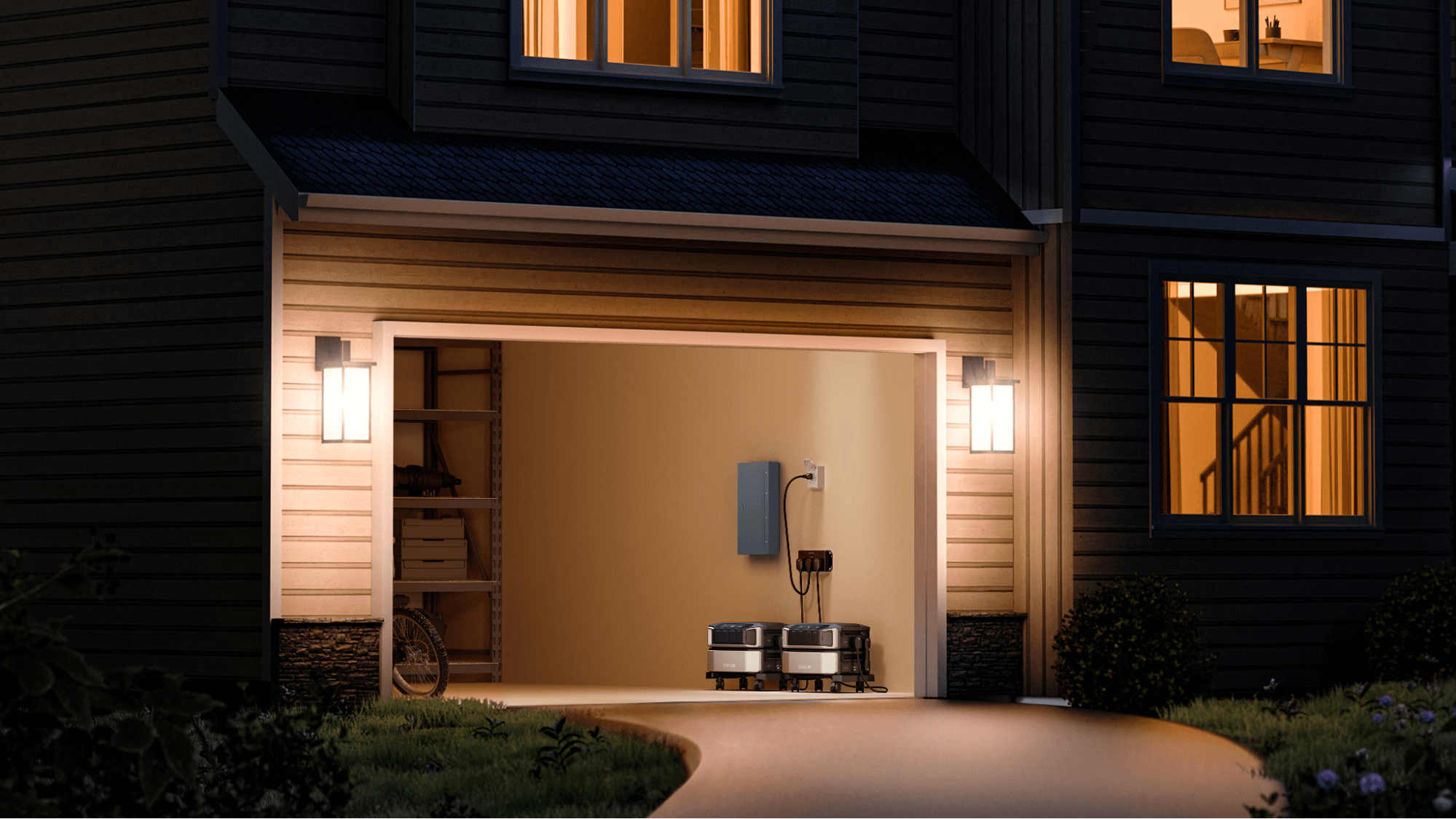Power Outages in the U.S.: State Rankings and the Smartest Backup Solution for Your Home
- Which U.S. States Lose Power the Most?
- The Best Power Backup Solution for Outage-Prone Homes
- Backup Power Isn’t a Luxury Anymore
- How to Pick the Right Backup System for Where You Live
- Are Generators Still Worth It?
- What Features Actually Matter During a Blackout?
- Why It Pays to Be Ready
- Conclusion: A Backup Plan You Can Rely On
- FAQs: What People Still Want to Know About Backup Power and Outages
You’re cooking dinner, and the lights flicker. Suddenly, everything goes dark. Across town, it’s the same story. Power outages aren’t rare anymore. In neighborhoods across the U.S., the power goes out once or twice a year—sometimes more. Some states deal with blackouts constantly. And it’s not just annoying. It can throw off your whole day, cost money, and put people at risk. With stronger storms and older power grids, having a solid backup plan just makes sense.
Which U.S. States Lose Power the Most?
Some places deal with outages way more often than others. In California, blackouts are common because of wildfire safety shutoffs. Texas sees them during heat waves and ice storms. States like Louisiana, Florida, and North Carolina get hit hard during hurricane season. If you live in one of these areas, it’s not really a question of if the power goes out—just when.
But it’s not always weather. Equipment failures, car crashes into utility poles, or overloaded systems can knock the power out, too. Some neighborhoods lose power every time there’s a strong wind. That kind of unpredictability is exactly why backup power is no longer optional for many homes.
So if the risk is rising, what’s the smartest way to prepare?
The Best Power Backup Solution for Outage-Prone Homes
Let’s say the power cuts out. What do you need right away? Your fridge is running. Your internet connection is stable. Maybe the heat or AC, depending on the season. And definitely enough outlets to keep lights on and phones charged. A good backup power system should do all of that. It should turn on fast, run the right devices, and last long enough to get you through.
That’s where systems like the EcoFlow DELTA Pro Portable Power Station stand out. It offers a large 3600Wh capacity, charges in under two hours, and delivers 3600W of power—enough to run your essential home gear like fridges, routers, or even a space heater. It supports expansion up to 21.6kWh if needed. You don’t have to worry about fuel, fumes, or loud engine noise. It runs quietly, is safe for indoor use, and can even be tied into your home’s circuit panel for seamless backup. For homes in areas with frequent outages, it’s a solid, stress-free way to stay powered.
Backup Power Isn’t a Luxury Anymore
It used to be something only off-grid homes or weekend cabins had. Now, even folks in downtown apartments are getting backup systems. Why? Because when the power goes out, they don’t want to lose work time, food, and comfort.
Short blackouts can cut off a Zoom meeting. They can reset your Wi-Fi, stop your coffee maker, or shut off medical devices. For many, it’s a real problem. More people now look for systems that work indoors, don’t need fuel, and keep daily life moving even when the grid is down.
You don’t need to power everything in your home. Start with the essentials. Then add more if needed. It’s better than hoping the power company fixes things in time.
How to Pick the Right Backup System for Where You Live
Not everyone needs the same setup. A family in Texas will need different features than someone in Minnesota. Here's how to figure out what fits your home best.
Step 1: List Your Non-Negotiables
Think about what absolutely needs to keep running during an outage.
Start here:
Fridge or freezer (yes, always)
Wi-Fi router (most people say yes)
Phone & laptop chargers
Space heater or portable AC (depends on season)
Medical equipment
Lights: how many rooms?
Add up wattage or total “must-run” hours. This gives you a basic load estimate.


Step 2: Match Your Home Type to Power Needs
Home Type | Suggested Battery Size | Suggested Output | Notes |
Small apartment | 1000–1500Wh | 1000W+ | Enough for Wi-Fi, lights, laptop |
2–3 person household | 2000–3000Wh | 1500W–2000W | Can support fridge, lights, router |
Family home (4+) | 3600Wh+ | 2000W+ | Add heater/AC, microwave, more outlets |
Step 3: Think About Where You Live
Live somewhere sunny? Choose a unit with solar input.
Live in cold states? Prioritize high output + fast recharging.
Frequent short outages? Get fast-charging batteries (1–2 hours).
Longer, less frequent outages? Consider expandable battery options.
Step 4: Plan for Later
Think ahead: What if the power doesn’t come back tomorrow? A system with extra capacity means you’re covered even when things stretch longer than expected.
Are Generators Still Worth It?
Gas generators have been around forever. They’re useful, but they’re noisy, need fuel, and can’t run indoors. You also need to do regular maintenance, store fuel safely, and hope it will start when you need it.
That’s why more people are switching to battery-powered systems. They’re easier to use, safer in your home, and quieter. You won’t need to worry about spark plugs or run cords through windows. And with models offering different outlet types, you can plug in anything from a coffee maker to a modem.
If you’ve ever struggled to start a generator in the rain, it’s easy to understand why folks are moving on.
What Features Actually Matter During a Blackout?
Here’s what you really want to look for:
Battery size — Get something that lasts at least one night. 3000Wh+ is a solid starting point.
Fast charging — In areas with frequent outages, 1–2 hour charging is a big plus.
Output power — You’ll want at least 2000W to run big appliances.
Quiet operation — Especially helpful at night.
Multiple outlets — AC, USB, and even car ports give you more flexibility.
Expansion options — If you can add batteries later, that’s a bonus.
When your system checks all these boxes, blackouts go from chaos to calm.
Why It Pays to Be Ready
We all hope the power stays on. But hope isn’t a strategy. In places where outages are becoming more common—or lasting longer—having backup power isn’t extreme. It’s smart.
Even a small outage can ruin your food, cancel your calls, or leave you stuck. And the thing is, it doesn’t take a hurricane. A transformer blowing out on a sunny day can do the same.
Backup power means you’re not stuck waiting. You’re in control.


Conclusion: A Backup Plan You Can Rely On
Power outages aren’t going away anytime soon. And there’s no guarantee the grid will get more reliable. Having your own backup plan means you stay ahead of the next blackout.
You won’t lose food. You won’t miss work. You won’t be caught off guard. It’s not about going overboard—it’s just about being ready enough to get through the night, stay connected, and avoid the scramble.
FAQs: What People Still Want to Know About Backup Power and Outages
Q1. How long can a home backup battery actually last during a power outage?
That depends on the size of the battery and what you’re running. A large-capacity backup battery (around 3600Wh) can keep essential items—like a fridge, Wi-Fi router, and a few lights—running for 1 to 2 days. If you're powering high-draw appliances like space heaters or well pumps, that time drops. Many systems allow you to monitor power use in real time, so you can stretch runtime by unplugging unnecessary devices. For longer outages, systems that support solar charging or expandable batteries offer the best flexibility.
Q2. Can backup battery systems be used in apartments or condos?
Yes, and in many cases, they’re even better suited for apartment use than gas generators. Since battery systems are silent, safe for indoor use, and don’t need fuel, they’re perfect for small spaces without outdoor access. Just make sure your unit can handle the devices you care about most, such as internet, cooking equipment, or medical gear. Look for compact models that still have decent output (1000W+). They’re ideal for renters who want backup without any complicated installation.
Q3. What kind of maintenance does a home battery backup system need?
Battery-based systems need very little upkeep compared to traditional gas generators. Most units just need to be recharged every 3–6 months if not in use, especially if they’re stored as emergency backup. Some models come with apps that remind you when it’s time to check on your battery. You should also store the unit in a cool, dry space to preserve battery health, and just plug it in and keep it charged.
Q4. Can I use a backup battery system while traveling, camping, or during tailgates?
Yes. Portable battery power stations are often designed with travel in mind. Many of them include wheels or handles, multiple outlet types, and pass-through charging so you can charge devices while the battery itself is recharging. If you're heading off-grid, some models work with solar panels to recharge during the day. You can run coolers, lights, speakers, or even small cooking gear. It’s a great way to get reliable power without needing noisy, fuel-burning equipment.
Q5. How does a backup battery compare to installing a full home solar system with battery storage?
A portable or plug-and-play backup battery is often a much more affordable and flexible option than installing a full home solar + battery setup. Full systems can cost $15,000–$40,000 or more and usually require permits, electricians, and roof-mounted panels. In contrast, a backup battery can be used immediately, moved around, and doesn’t require permanent changes to your home. For many people, it’s a simpler first step that covers the most critical needs without the high upfront cost.